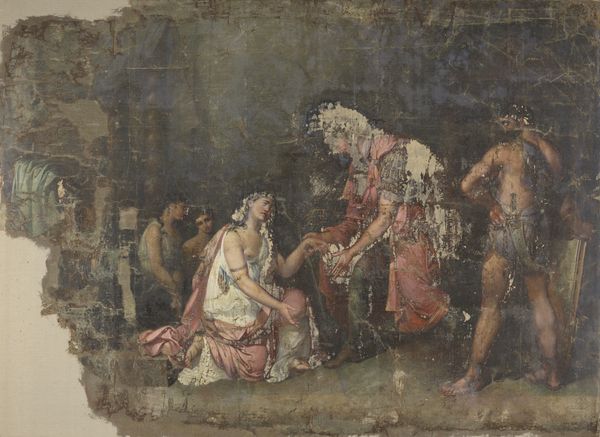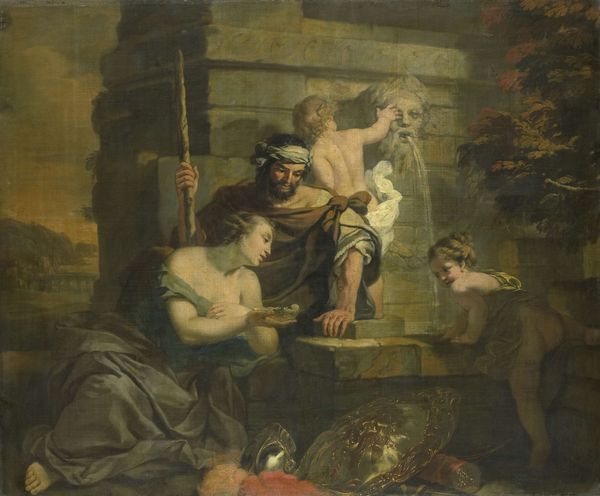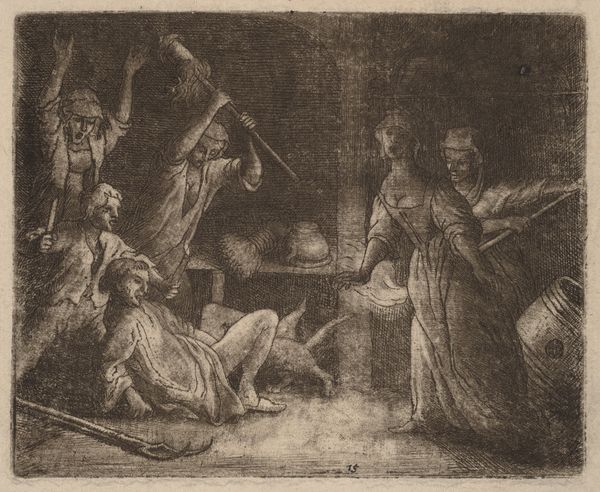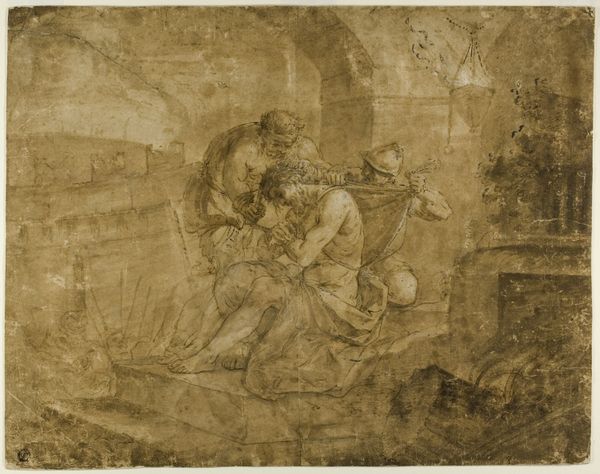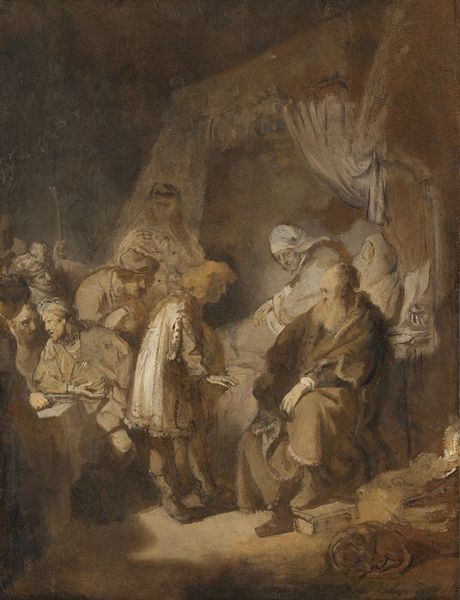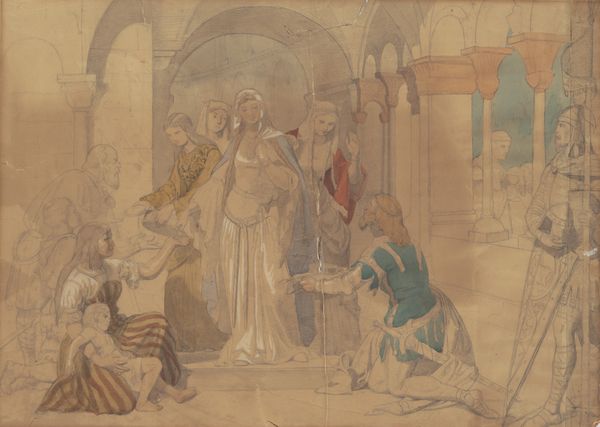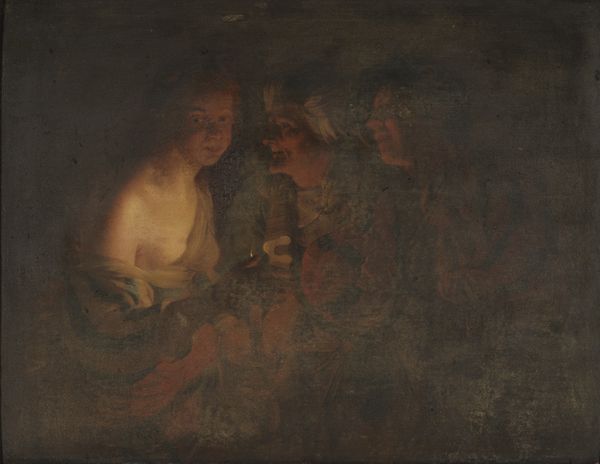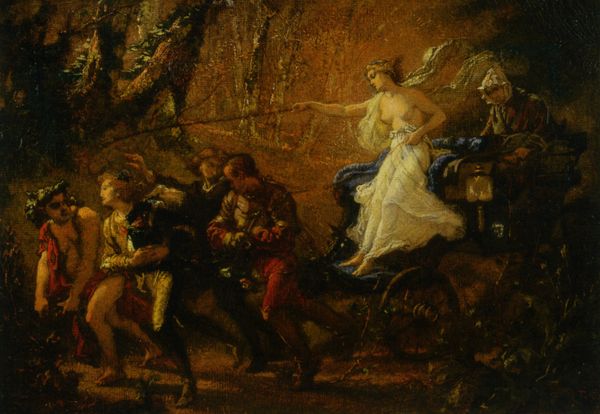
oil-paint, fresco
#
neoclacissism
#
allegory
#
narrative-art
#
oil-paint
#
figuration
#
fresco
#
oil painting
#
classicism
#
genre-painting
#
history-painting
Dimensions: height 265 cm, width 360 cm, height 293.5 cm, width 373.5 cm, depth 8.6 cm
Copyright: Rijks Museum: Open Domain
Curator: Benjamin Wolff's "The Death of Sophonisbe, Queen of Numidia," completed in 1816, presents a tragic tableau rooted in classical history. Editor: The overwhelming sense here is of a subdued tragedy. Note the limited palette—almost monochromatic, reinforcing the heavy mood. What strikes me most is the dramatic use of chiaroscuro, pulling the viewer’s eye towards the central figures. Curator: The story is that Sophonisbe, a noblewoman of Carthage, chose death by poison rather than submit to Roman captivity. Wolff places her defiance within a broader narrative of resistance against imperial power. It raises crucial questions about agency, power, and the limited choices afforded to women in patriarchal societies. Editor: True, but consider how the artist’s Neoclassical approach is working on a formal level. The figures, particularly Sophonisbe, embody an almost sculptural quality. Think of the cool, hard lines defining the drapery and the measured grace in her pose. Curator: It's precisely that “measured grace” that I find so compelling. It underscores the performance inherent in Sophonisbe’s final act, making it an explicit commentary on feminine roles during that era. Look how the painting engages with discourses of stoicism, virtue, and patriotic duty. The political is etched into the bodies themselves. Editor: Of course, one can see that. But I am interested in how Wolff creates a sense of depth. He manipulates light, shadow, and form with extraordinary precision, particularly the strategic placement of each element within the frame. Sophonisbe almost leaps out due to Wolff’s precise articulation. Curator: Agreed! But to solely focus on form seems almost a deliberate avoidance of its powerful message! Sophonisbe is forever immortalized, dictating her own narrative within the annals of colonial resistance, instead of becoming another conquered trophy within the folds of Roman conquests. Editor: In a way, perhaps, we both appreciate this composition from opposing, though converging perspectives, which amplifies its brilliance. Curator: Yes, its compelling intersection of form and narrative provides a fertile ground for enduring reflection.
Comments
No comments
Be the first to comment and join the conversation on the ultimate creative platform.
